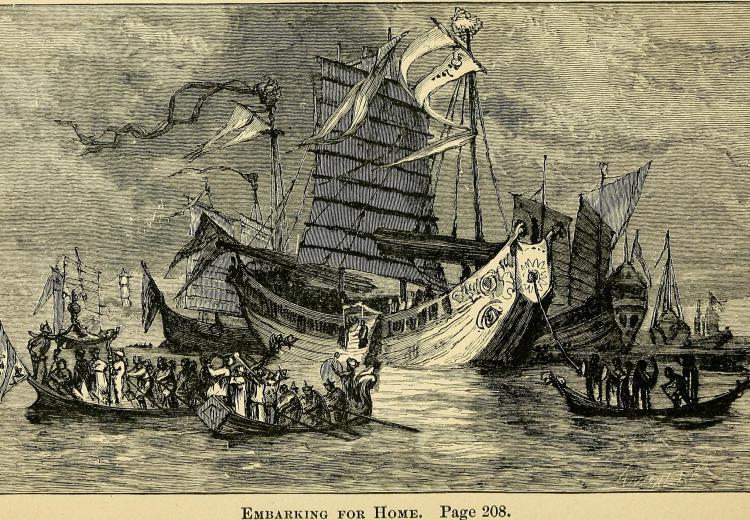Lesson 6: On the Road with Marco Polo: Sea Voyage to India

"Embarking for Home," from Marco Polo: His Travels and Adventures, published in 1880.
In the 13th century, a young Venetian named Marco Polo set out with his father and uncle on a great adventure. Following a series of trade routes, they traveled across the vast continent of Asia and became the first Europeans to visit the Chinese capital (modern Beijing). Marco so impressed the reigning emperor of China, Kublai Khan, that he was appointed to the imperial court. For the next 17 years, Marco was sent on missions to many parts of Kublai's sprawling empire. The Polos finally returned to Venice via the sea route. Marco later wrote a book about his experiences, which inspired new generations of explorers to travel to the exotic lands of the East.
Guiding Questions
Why did Marco Polo follow particular routes from China to Indonesia?
To what extent did the natural environment affect Marco Polo's travels?
How did Marco Polo's travels change the economies and cultures of the places he visited?
Learning Objectives
Summarize the first leg of Marco Polo's return voyage.
Analyze the relationship between the topography of South Asia in the 13th century and the routes traveled by Marco Polo.
Evaluate the impact of Marco Polo's travels on South Asia and South Asia's influence on Marco Polo's travels.
